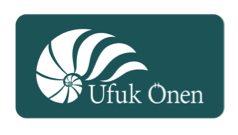Uyanık Hipnoz
Günlük Yaşamda Uyanık Hipnoz Bu fenomenin günlük yaşamda spontane olarak birçok kez ortaya çıktığı örnekler bulunmaktadır. Örneğin, annenin öpücüğünün (yani “öpünce geçer”) çocuğun acısını geçireceğine kesin olarak inanan ağlayan çocuğu düşünelim (Elman, 1964/1984). Bu durumda, çocuğun zihni annenin öpücüğünün acıyı hafifleteceği veya hatta ortadan kaldıracağı fikrine kilitlenmiştir. Dolayısıyla, çocuğun eleştirel yetisi yanıltılmış olur (yani annenin öpücüğünün acıyı hafifletebileceği mantıksız bir önermedir) ve seçici düşünce oluşturulur (yani annenin öpücüğü acıyı hafifletecek), bu da bir hipnotik etkiyi tetikler (yani annenin öpücüğü acıyı hafifletti – hipnotik analjezi veya anestezi olarak adlandırılır) ve trans durumu kullanılmadan (uyanık hipnoz olarak) elde edilir.
İşte başka bir örnek: Yaz mevsimi, adam çok rahat hissediyor ve havanın tadını çıkarıyor (Elman, 1956). Birden biri “Vay canına! Ne kadar sıcak!” der ve kısa bir süre sonra adam terlemeye başladığını fark eder. Bu durumda da, önceki örnekle benzer şekilde, kişinin eleştirel yetisi yanıltılır (yani sıcak olabileceği yanılgısı) ve seçici düşünce oluşturulur (yani sıcak olduğu), bu da bir hipnotik etkiyi tetikler (yani adam sıcak hisseder ve terlemeye başlar – vücut sıcaklığı ve terleme gibi otomatik süreçler üzerinde kontrol sağlanır) ve trans durumu kullanılmadan (uyanık hipnoz olarak) elde edilir.
Bu örneklerden açıkça görülmektedir ki, uyanık hipnoz fenomeni günlük yaşamın bir parçasıdır. Belirlenmesi gereken ise bu fenomenin tıp ve diş hekimliği gibi diğer alanlarda nasıl uygulanabileceğidir. Tıp ve Diş Hekimliğinde Uyanık Hipnoz; Uyanık hipnoz, tıp ve diş hekimliği alanlarında önemli bir rol oynamaktadır. Bununla ilgili birkaç örnek yeterli olabilir. Doktorlar ve diş hekimleri zaman zaman çeşitli somatik şikayetler için placebo enjeksiyonu yaparlar – sadece steril su veya tuzlu su kullanarak (Elman, 1956; Hall, 2008, Ağustos). Hastaya enjeksiyonun semptomları hafifleteceğini söyleyen bir doktoru düşünelim. Hastanın bu öneriyi istemesi ve zihninin enjeksiyonun semptomları hafifleteceği fikrine kilitlenmiş olması durumunda, bir hipnotik etki (yani vücuttaki istemsiz sistemler ve süreçler üzerinde kontrol) elde edilebilir.
Benzer şekilde, doktor veya diş hekimi, (steril) jelin uygulandığı alanın uyuşmasına neden olacağını hastaya bildirirse, uygun şartlar sağlandığında uyanık hipnotik bir etki olan hipnotik anestezi (Elman, 1964/1984) tetiklenebilir. Aslında, bir doktor veya diş hekimi plasebo verdiğinde veya reçete ettiğinde uyanık hipnozu kullanmaktadır (Elman, 1956).
Başka bir örnek, diş hekiminin, ağzın arka kısmına bir alet yerleştirildiğinde her seferinde kusma refleksi yaşayan bir hastayı şöyle tedavi etmesidir: “İşte bir kalem. İki elinle tut. Onu tuttuğun sürece kusamayacaksın” (Elman, 1956, s. 21). Hasta kalemi kavrar ve artık kusmadığını fark eder. Burada hasta bir uyanık hipnotik etki elde etmiştir – istemsiz bir refleks üzerinde kontrol sağlanmıştır. **Tıp ve diş hekimliğinde uyanık hipnozun kullanıldığı birkaç örneği inceledikten sonra, dikkat şimdi psikoterapi alanına yönlendirilebilir.
Waking Hypnosis in Daily Life There are many instances of this phenomenon occurring spontaneously in daily life. Consider, for example, the crying child who is certain that if the mother should kiss him or her (i.e., “kiss it better”), the pain will disappear (Elman, 1964/1984). In this respect, the child’s mind is locked around the idea that the mother’s kiss will alleviate or even remove the pain. Thus, the child’s critical faculty is bypassed (i.e., illogical premise that mother’s kiss can alleviate the pain) and selective thinking is established (i.e., mother’s kiss will alleviate the pain), which precipitates a hypnotic effect (i.e., mother’s kiss has alleviated the pain—referred to as hypnotic analgesia or anaesthesia) achieved without the use of the trance state (i.e., waking hypnosis). Here is another example: It is summer-time, the man is very comfortable, and he is enjoying the weather immensely (Elman, 1956). Suddenly someone says, “Wow! It’s hot” and, in a short while, the man notices that he is perspiring profusely. In this respect, and similarly to the previous example, the individual’s critical faculty is bypassed (i.e., the false premise that it may be hot) and selective thinking is established (i.e., it is hot), which precipitates a hypnotic effect (i.e., he becomes hot and starts to perspire—control over autonomic processes, such as, body temperature and perspiration) achieved without the use of the trance state (i.e., waking hypnosis). It is thus apparent, from these examples, that the phenomenon of waking hypnosis is part and parcel of daily life. What remains to be determined is the explicit application of this phenomenon in other areas, such as medicine and dentistry. Waking Hypnosis in Medicine and Dentistry Waking hypnosis seems to feature prominently in the fields of medicine and dentistry. A few examples of this may suffice. Physicians and dentists at times administer a placebo injection—using sterile water or saline only—for a myriad of somatic complaints (Elman, 1956; Hall, 2008, August). Consider the doctor who tells the patient that the injection will alleviate his or her symptoms. Provided that the patient wants the suggestion and his or her mind is locked around the idea that the injection will alleviate the symptoms, a hypnotic effect (i.e., control over involuntary systems and processes in the body) may be achieved. Similarly, a doctor or dentist who informs the patient that the (sterile) jelly, which has just been applied, will cause the area to go numb, may—provided the conditions are satisfied—precipitate a waking hypnotic effect, namely an hypnotic anaesthesia (Elman, 1964/1984). In fact, any time a doctor or dentist gives or prescribes a placebo, he or she is using waking hypnosis (Elman, 1956). Another example is the dentist who treats a patient with an overdeveloped gag reflex—that is, a patient who gags every time an instrument is inserted into the back of the mouth—by saying, “Here’s a pencil. Hold onto it with both hands. So long as you hold onto it, you won’t be able to gag” (Elman, 1956, p. 21). The patient grasps the pencil and is surprised to find that he or she doesn’t gag anymore. Here, the patient has achieved a waking hypnotic effect—control over an involuntary reflex. **Having reviewed several instances in which waking hypnosis is used in medicine and dentistry, the attention can now shift to the field of psychotherapy.



